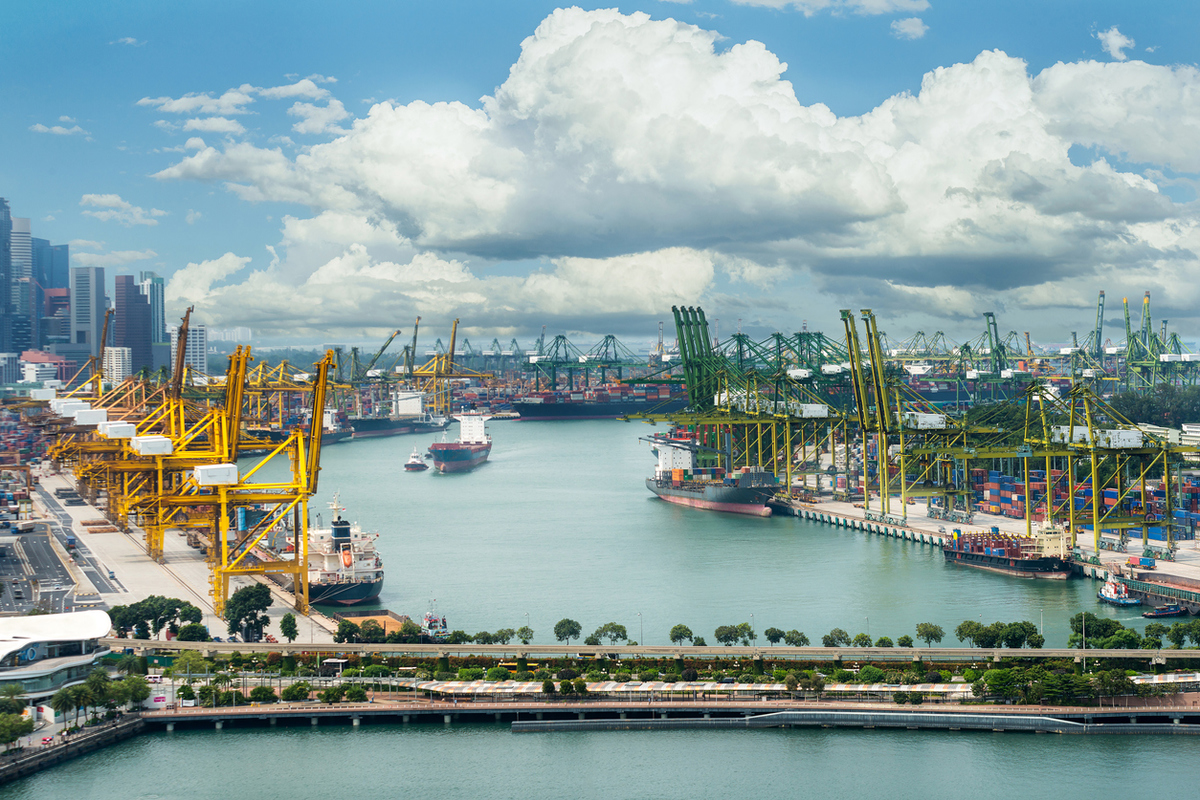Silk Alliance unveils plan for green ammonia- and methanol-fuelled shipping corridor
Pilot voyages will start in three years, with more scale by the end of the decade.
 PHOTO: Cargo terminal at the Port of Singapore. Getty Images
PHOTO: Cargo terminal at the Port of Singapore. Getty Images
The Silk Alliance, a cross-supply chain industry partnership, has come up with a plan to implement a green shipping corridor. It has set several milestone targets for green ammonia and methanol uptake by ships towards 2030. Biomethane and synthetic methane are also put forward as alternatives.
The alliance will map out measures that can be deployed to expand supply and consumption of these fuels, from pilot voyages to greater scale. Before deciding which fuels to bet on, the alliance partners will determine carbon intensity targets for each fuel, design fuel pathways make a plan for how to attract finance.
Great potential, great expectations
They will initially focus on ships that bunker in Singapore and sail across Asia, East Africa, the Middle East, Australia and the Pacific Islands. The project will then be expanded to cover other regional hubs and deep-sea routes like Singapore-Rotterdam, which, according to a recent McKinsey report “is the largest of the three major East–West containership routes and offers the greatest potential to reduce emissions."
"In 2019, approximately 24 million twenty-foot equivalent units (TEUs) were traded on the route, on 365 vessels. The ships burned approximately 11 million metric tons of fuel, accounting for roughly 3 percent of global shipping emissions - more than any other global trading route," McKinsey found.
Cross-sector backing
Silk Alliance members include the shipping firms MPC Container Ships, Pacific International Lines, Wan Hai Lines, X-Press Feeders, Yang Ming Marine Transport, Wilhelmsen Ship Management and MSC Shipmanagement. These are mainly container and feeder shipping companies - which tend to be more responsive to environmental concerns by extension of their end consumers. But it is unclear whether they will put forward any of the ships they own and manage for pilot voyages on methanol, ammonia or methane.
The alliance was founded by Lloyd's Register and is also made up of ammonia producer Yara Clean Ammonia, the Methanol Institute interest organisation, engine maker Wartsila, the Port and Maritime Authority of Singapore and others across industries.
They aim to scale uptake of near-zero-emission methanol and ammonia this decade and have come up with an ambitious timeline.
Timeline
2024: Set carbon intensity targets for fuels
2026: Deploy pilot vessels with low-carbon methanol
2027: Deploy pilot vessels with low-carbon ammonia
2028: Deliver methanol at scale for bunkering in Singapore
2028: Deploy near-zero-emission methanol-fuelled vessels across the corridor
2030: Deliver ammonia at scale for bunkering in Singapore
2030: Deploy near-zero-emission ammonia-fuelled vessels across the corridor
By Manjula Nair
Please get in touch with comments or additional info to news@engine.online





